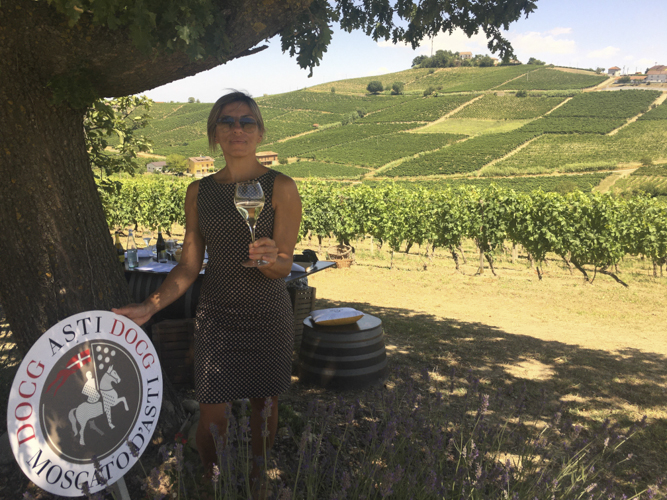
INTRODUCTION
The wines from Piedmont’s Asti region, the fragrant and frizzante Moscato d’Asti and bubbly, dolce Asti spumante hold Italy’s highest Docg designation for quality and may be known all over the globe, but to really understand their elusive secrets, a wine lover needs to make a pilgrimage to this region’s picturesque hills whose vineyards were the first to receive Unesco World Heritage recognition. Bordered by the towering peaks of the Alps on one side and the maritime influences of the Ligurian Sea on the other, Asti vineyards cover one of Italy’s largest geographical denominations, spreading over the provinces of Cuneo, Asti and Alessandria, a wine and food paradise renowned for highly-prized white truffles and hazelnuts, the home of the Slow Food movement, the prestigious red wines of Barolo, Barbera and Barbaresco.
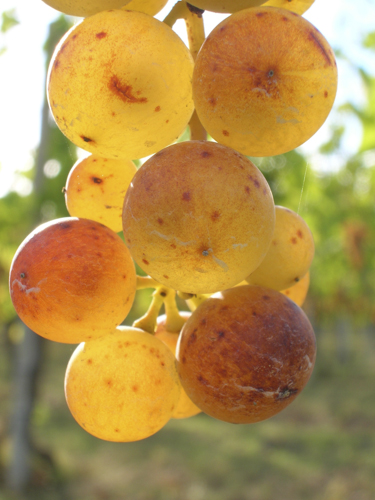
But this Trail visits ten friendly, welcoming winemakers who cultivate the unique aromatic Moscato Bianco grape that has been grown here for since at least the Middle Ages, producing what is simply one of the world’s most popular wines. In Italy, the traditional Christmas panettone cake must be accompanied by a light, fruity glass of Moscato d’Asti, while weddings and birthdays are always celebrated with the pop of a bottle of Asti spumante. And this surprising wine pairs also pairs just as well with cheese, spicy and salty food. Although different varieties of the Moscato grape have been planted across the globe, the wine made here has an unbeatable combination of limestone and sandy soil, steep, sunny vineyard slopes known as a ‘sorì’, predominantly manual cultivation throughout the year, ending in an obligatory hand-picked harvest. Then in the cellar, there is a genuine synergy between traditional and modern techniques, from fermentation in high-tec autoclave tanks to the ancient custom of small batch bottling throughout the year to ensure that every bottle, throughout its year of production could not be fresher, fruitier more aromatic, no matter when you buy it. Tasting with today’s winemakers, though, you will also discover a new movement away from the historic concept that Asti must be drunk solely in the year it was made, as a new amendment to the winemaking rules will allow a Riserva vintage that can be aged for upto 3 years. Wine tourism is already well developed in this part of Piedmont, with the website of the Asti Consorzio a mine of information to organise vineyard visits and discover for yourself the secrets of these seductive, subtle wines.
Run by two young brothers, 33 year-old Enrico and 26 year-old Davide, this is a 100% family affair as the parents work alongside their sons in the vineyard, while 96 year-old Nonna Maria cooks for her grandsons.
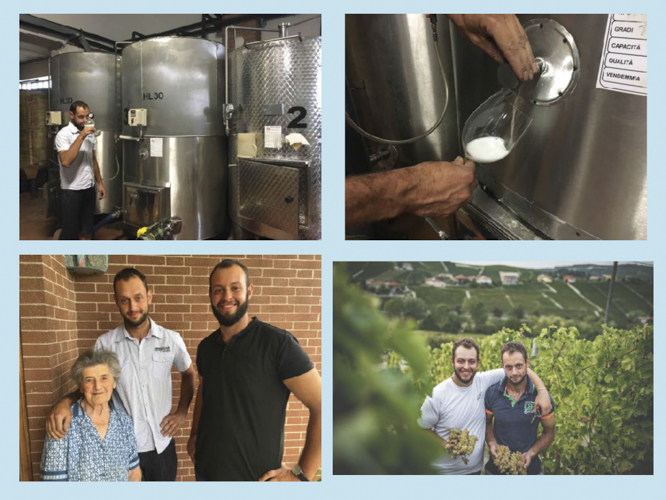
Ghiga is the perfect cantina to request a cellar tour to really understand the complex production of Moscato d’Asti. Enrico patiently explains to visitors how “we initially press the grapes, then keep the mosto, a mush of the crushed grapes and juice, in steel tanks at 0° Centigrade. Then we ferment batch by batch, only as and when there is a demand for bottles, so each bottle is the freshest, fruitiest possible anytime of the year. Very different from a normal wine that is bottled once a year. To begin fermentation, the batch of mosto passes into an autoclave tank that raises the temperature to 20° Centigrade, starting fermentation as yeast is added. The autoclave activates the natural gas to create the bubbles for a light frizzante, and the mosto takes one week to ferment to around 5° alcohol when the fermentation is abruptly stopped with the temperature dropping down to zero again. Then it is ready to be bottled.”
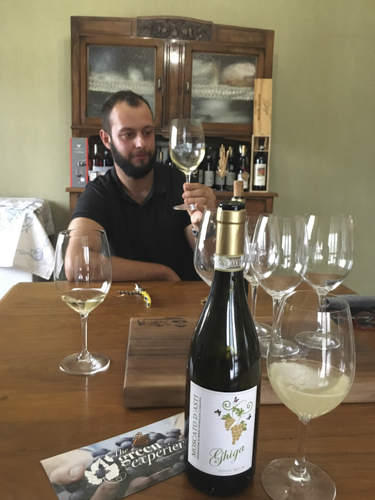
While 70% of their harvest is sold to industrial wineries, the brothers are open-minded for the future, because “for the moment, it would take too much investment to make our own Asti spumante or a Metodo Classico, but in the future why not. And we are exporting our Moscato d’Asti as much a possible, approaching emerging markets like Uganda and Ghana who are more curious and where there is less competition.” They are similarly pragmatic over converting to organic. “As a small winery the financial cost to go certified organic would be too great to bear. But we are just as pleased to join a newer more flexible certification The Green Experience, which does not allow pesticides and encourages innovative agroforestry initiatives like fixing birds nests in the vineyards to encourage increased biodiversity of birds, bees and especially bats which are the perfect natural predator, eating around 3,000 insects a night.”
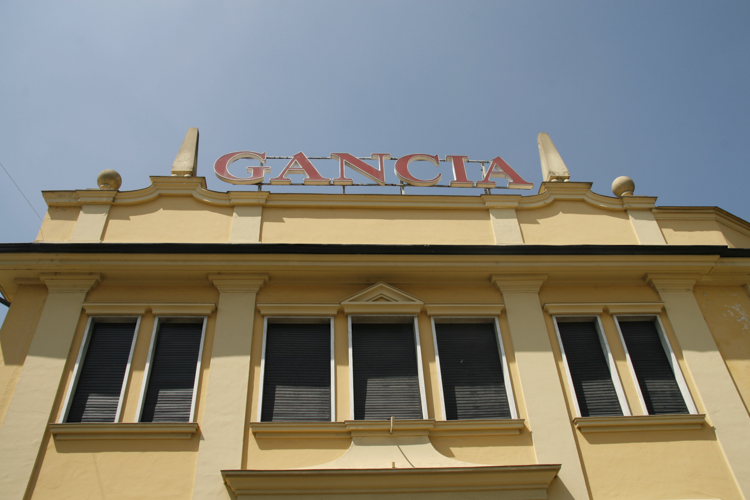
The name Gancia and the Moscato d’Asti grape are inextricably linked by history, as this was the family that created the first-ever Italian bubbly Spumante wine back in 1865, long before anyone had ever heard of Prosecco. Inspired by a long stay in Champagne, where he learnt the mysterious secrets of ‘Methode Champenoise’, Carlo Gancia returned in 1850 to the region around Canelli and ‘Moscato Champagne’ was born. Today, Canelli could easily be renamed Ganciaville, dominated by the majestic Castello Gancia on high and the immense cellars right in the town centre. After 5 generations, the family finally ceded control of Gancia in 2011 to Roustam Tariko, the international businessman owner of Russian Standard Vodka. His goal is to return to the origins and heritage of Gancia. A regular visitor to the cantina, he has prioritised Moscato d’Asti and Asti Spumante as the two foundation pillars of the multinational drinks company that today produces over 25 million bottles each year. And he believes in the traditions of Gancia, as the company remains committed to the traditional ‘dolce’ qualities of the Moscato d’Asti grape, especially for their historic Dolce Spumante. Although Gancia produce over 6 million bottles of Asti Spumante and Moscato d’Asti a year, they are essentially a ‘transformer’, similar to the famous Champagne houses, meaning they buy grapes produced on some 2,000 hectares of vines, closely following the work of smallholder cultivators, but do not actually own their own vineyard.
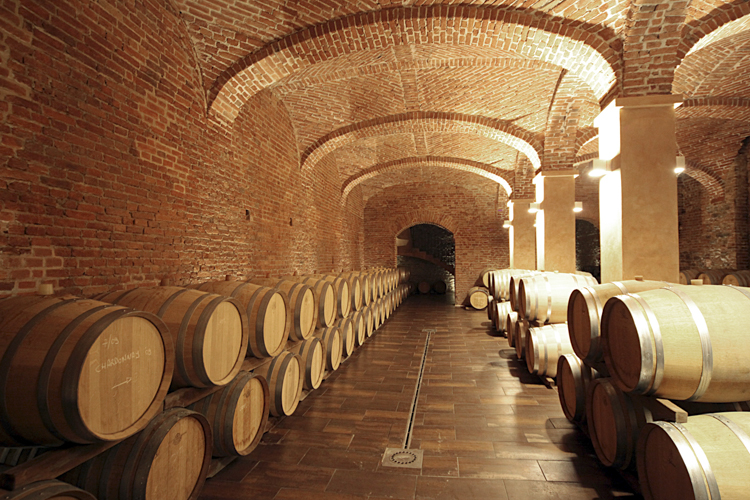
Here in Canelli, their oenologist, Mario Borgogno, may have been with the company for 30 years, but he continues to experiment, and their recent Cuvée Asti 24 Mesi is an exceptional Metodo Classico with currently the 2012 vintage on sale to the public. No other cantina produces a wine like this. With their historic cellars soon to reopen to the public, this will be the chance to see the contrasting cathedral like cellars used for the Metodo Classico’s bottle fermentation and barrel ageing alongside the futuristic steel autoclave tanks holding the equivalent of 90,000 bottles of Spumante.
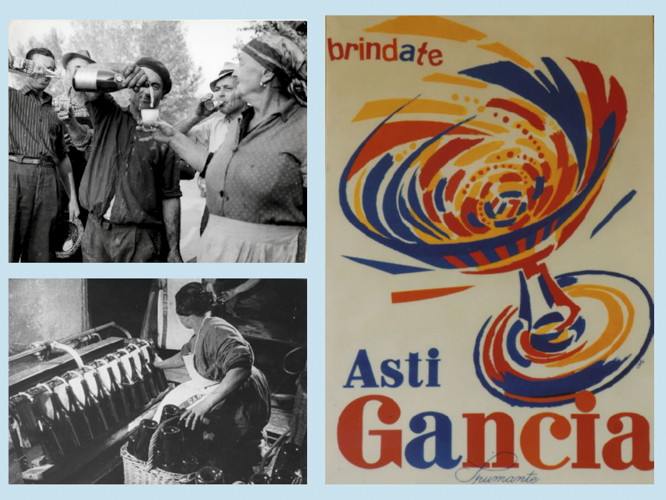
And then there is the famous Gancia museum, an unparalleled historic collection of stylish, graphic advertising memorabilia that for a century promoted a unique Italian lifestyle.
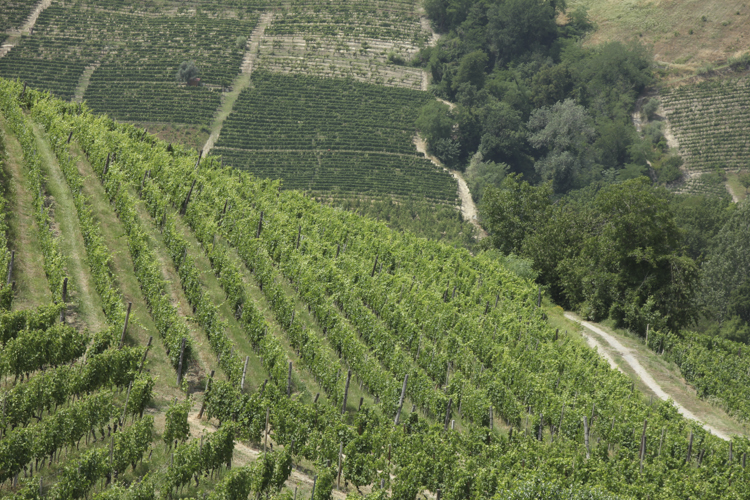
Beppe Bocchino cultivates vineyards across the hills around Canelli that have been in his family’s hands for over two centuries. He founded today’s modern winery, bottling and commercialising their first vintages in the 1970’s, “a time when there were only two choices of life here; working in the vine or the Fiat factory in Torino.” Today the day-to-day running is in the hands of his children, Daniele and Annalisa, but Beppe remembers the days when the azienda was a working farm with animals and cereals. “You can say that I was born with Moscato, it is the grape and the wine that represents our cantina, our identity.
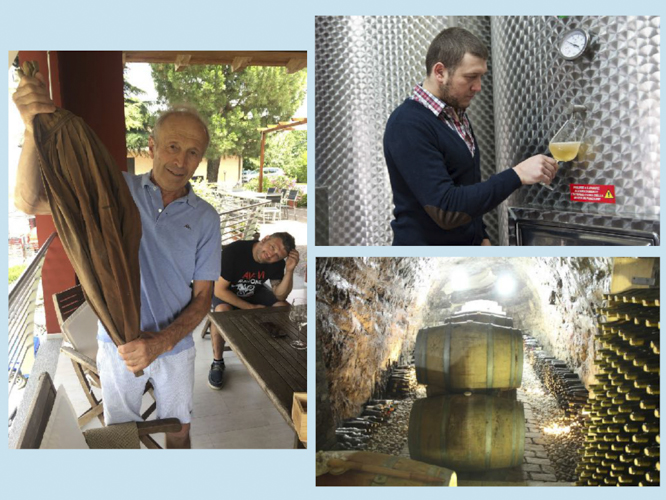
Although the wine is technically more perfect today, I remember nostalgically the days before the technology of the autoclave that took over our cellars from the 1980’s. Before we put the Moscato grapes in oak barrels and filtered the wine through jute sacks – the Sacchi Olandesi. Back then, the big producers like Martini Rosso would employ over 50 women just to wash the sacks, and not in hot water either!” Today’s modern cantina has a breathtaking terrace for wine tastings, overlooking part of the first-ever vineyards to be classified as Unesco World Heritage, and as Annalisa prepares a perfect tasting of traditional plin ravioli paired with their latest Moscato d’Asti, Daniele describes how, “ Moscato d’Asti is a difficult wine to make, be under no illusions, and it has become more technical over the years.
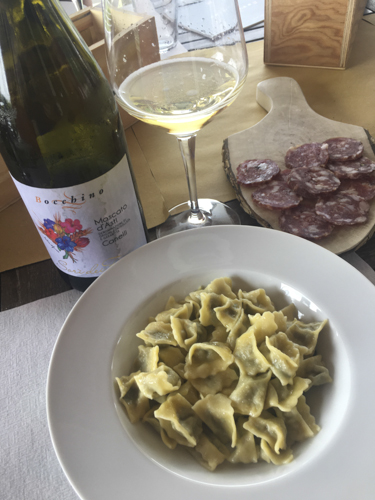
The winemaker is like a pastry chef who follows the exact instructions of a recipe, treating the grape like a baby that has to be watched over all the time. But this unique wine has incredible global recognition, opening the door to the whole world for us winemakers.” Despite a modern cellar filled with shiny steel autoclave tanks, Daniele still uses the traditional ‘crutin’, a damp underground grotto perfect for ageing, and insists on having each year’s harvest ready and bottled by December, “because Moscato d’Asti is everyone’s favourite Christmas drink with a delicious panettone.”
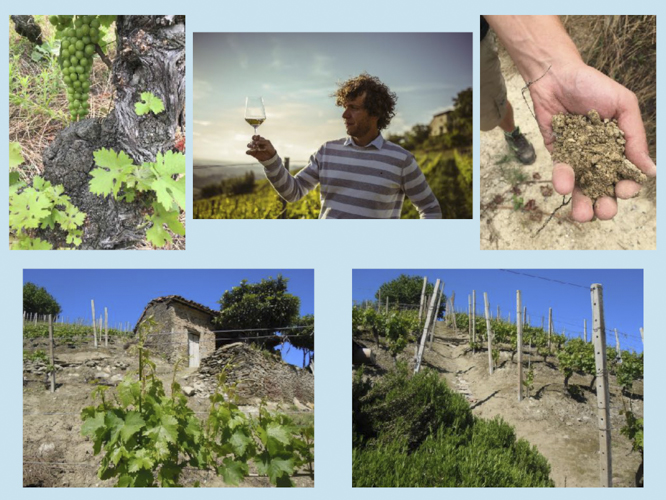
It just takes a few minutes of conversation to realise that Emanuele Contini is an impassioned young winemaker. You need a head for heights driving up the steep lane leading up to his Azienda where builders are putting the finishing touches to a new wine cellar.
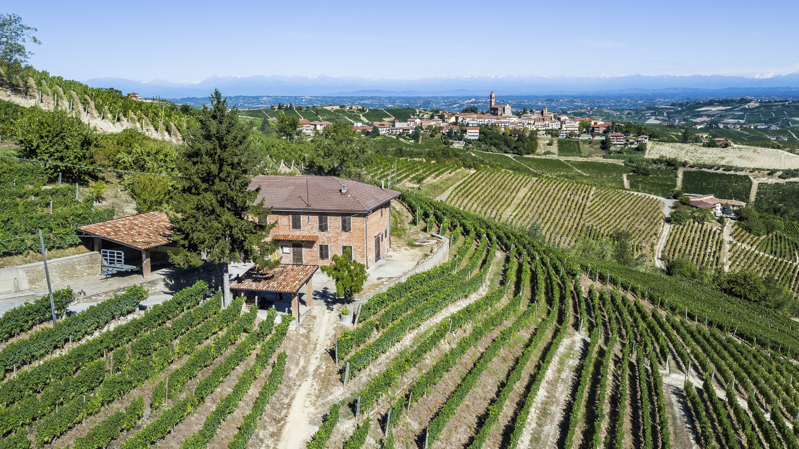
There is a vertiginous drop down into the vineyards, and Emanuele immediately points with pride across the valley to his cherished hillside plot, Vigna Monucco. “This is what we call here a Vigna Eroica, a south-facing steep slope that demands intense manual labour but yields grapes that produce an exceptional wine.” It is a genuine single vineyard, and for the moment, is the source of Emanuele’s only cuvée, that he started bottling in 2014, “because I am forced to sell the rest of my grape harvest direct to Martini Rosso to generate cash-flow to create my own wines. It makes me think that the old semi-feudal smallholder system of the Mezzadria has never really gone away for all us viticoltori still obligated to sell our grapes.” Walking through the cellar, he recalls how, “my grandfather started the estate in 1949, making Moscato d’Asti with a mix of the traditional Sacchi Olandesi jute sacks alongside what was then the latest technology, cement tanks. Here are the tanks, and I am delighted to still be using them. And we have not abandoned the Sacchi Olandesi either. We use them for the first filtration, immediately after the initial grape pressing.
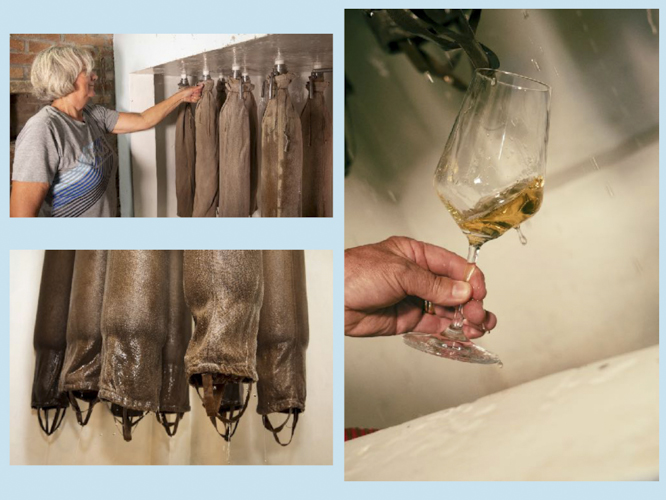
My Mamma is the resident expert for this as she grew up with his technique. Originally the wine would be filtered every week through the autumn, then every month in winter then from April it was ready to be bottled.” He is convinced that Moscato d’Asti has a future as a quality aged wine, and he keeps 5% of his annual production in the cellar.
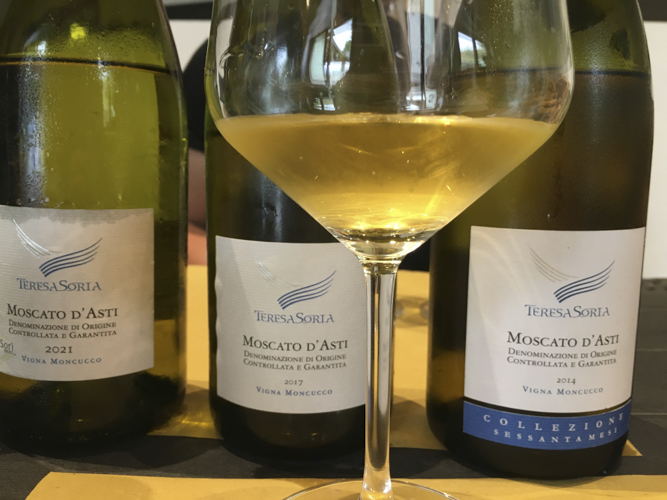
Opening vintages from 2021, 2017 and 2014 Emanuele admits the wine loses a little freshness, “but it becomes velvety, less bubbly, with a wonderful colour that subtly changes to straw yellow. Once wine lovers come here and taste these older vintages I am sure they will not end up going back to the younger, fresher wines.”
While Canelli may be the unofficial wine capital of Moscato d’Asti, the bustling market town of Santo Stefano Belbo is the beating heart of region, surrounded by steep vineyards where some of the most prized grapes grow. And driving into town, both sides of the road are lined by the immense modern cellars and towering steel vats of the Capetta winery. This is one of Italy’s most important independent family wineries, founded in 1953 and run today by second-generation Riccardo Capetta.
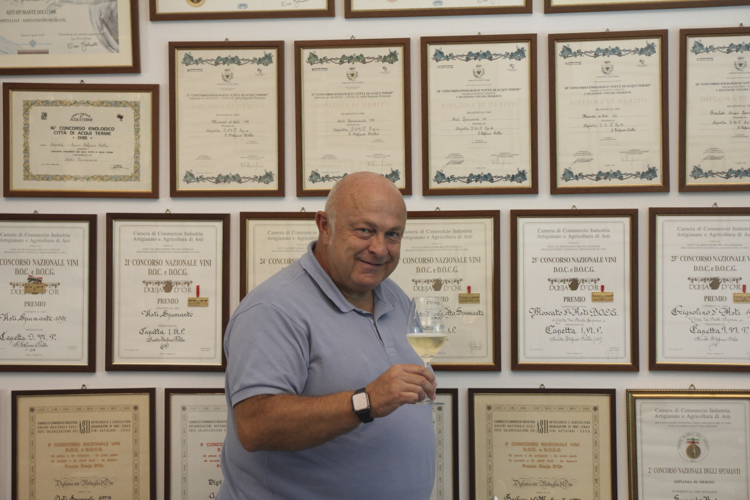
Holding court in the company boardroom, surrounded by dozens of awards from wine competitions around the world, he proudly recalls how “my father was a peasant farmer, who decided to leave his vines behind and become what you can call a pioneer ‘transformer’ of wine. By that I mean the commercialisation on a large scale of our local wines, initially by demijohns and bulk sales, then bottling, then sophisticated commercial marketing, then export markets, while always investing in technology for the future.”
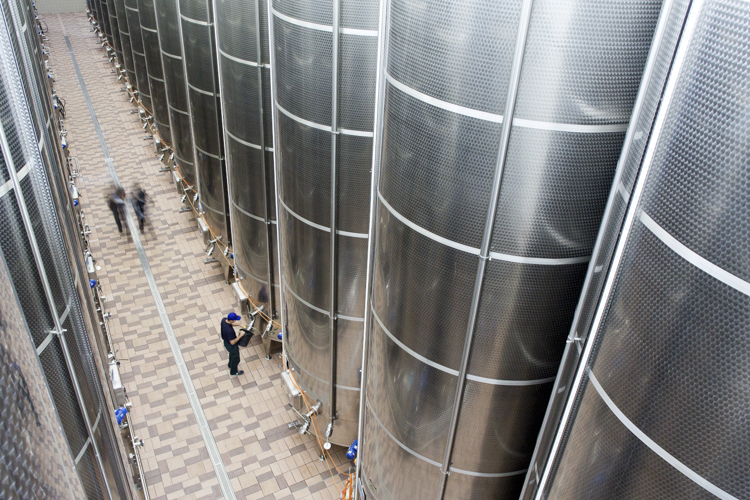
Today the cantina produces a staggering 5 Million bottles of Moscato d’Asti, which Signor Capetta describes as “the identity of our winery, a unique frizzante dolce wine. The strength of our azienda is absolutely this aromatic grape from the Asti terroir, producing a wine that allows us to enter markets the world over, and that includes countries that are already major wine producers in their own right like France, Spain, Portugal and of course the United States. Our popularity among consumers there has been created because their vineyards simply do not posses an aromatic grape that can rival Moscato d’Asti, our remarkable terroir, the rare mix of ancestral traditions and modern technology.” While admitting that Asti Spumante remains dominated by the global brands of Martini Rosso, Cinzano and Gancia, Capetta is committed to developing the dry Spumante, Asti Secco, because, “we have actually been surprised to discover how our grape can actually age very interestingly rather than always being consumed in the year of its production as has always been the case. So we may well launch a vintage Secco in the future.”
Even before you arrive at the Torelli family cantina you know you are visiting a very special azienda as the vines that line the roadside are decorated with colourful panels from a comic strip.
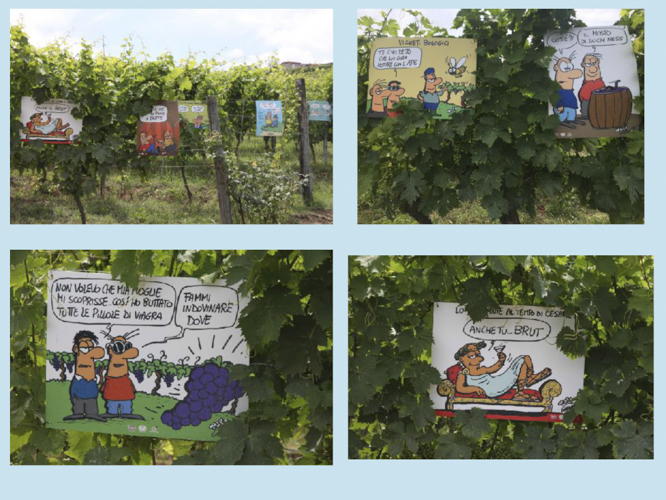
They are extracts from an immensely successful ‘fumetto’, comic book, that winemaker Gianfranco Torelli has written alongside a well-known cartoonist that chronicles in a fun but educative narrative the story of how in 1992, this cantina became the first-ever certified organic winery in Italy. Number 000001. “We actually started in bio in 1985,” he recounts. “It was my initiative and fortunately my father backed me up enthusiastically compared with many other cantinas that descended into a war of the generations, with the elders thinking it was madness to abandon pesticides. Their mentality was totally based on increasing production as much as possible whatever the cost to the environment. From our early organic days we began in the vineyard, nature and cultivation, but now the issue is also sustainability and the cellar is as important as the vine. We are all using too much energy, so our cantina runs off our own solar panels.” While this is a fourth generation winery, many things have changed since the 1880’s as the family grew from Mezzadri sharecroppers to landowners today of a 14 hectare vineyard.
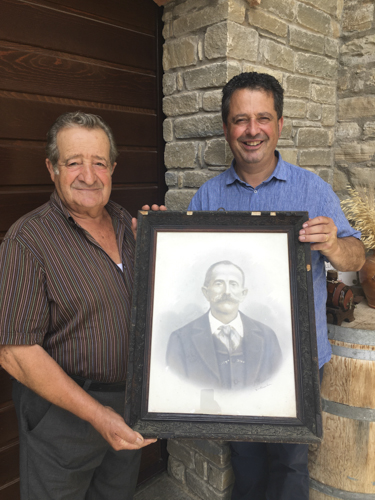
“My father Mario still works at my side,” he recounts, “ but while he survived by selling wine and mosto in bulk to larger cantinas, today I will not part with a single grape from my vines.” Giancarlo gets very excited describing the upcoming changes in the Denominazione to create a Canelli DOCG Moscato d’Asti, “though I hope it will be see the emergence of an artisan vigneron’s cru rather than another wine dominated the big industrial producers, which is what has happened with Asti Spumante. Most exciting is the creation a Riserva line, with at least three years of ageing. I have all my vintages ready in the cellar, going back at least to 2010.” Tasting a glass from 2012 , Giancarlo points out that while a Barolo gets lighter as it ages, the colour of a Moscato d’Asti becomes more intense, and while the perfumes may be less floral they become marked instead by intriguing dried apricot and peach, almost like a Riesling.
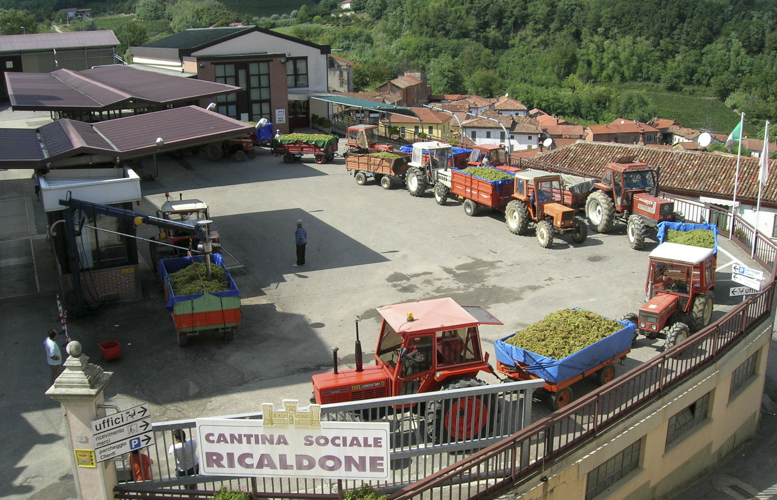
Tre Secoli may mean three centuries but in reality this large Cantina Sociale, where 300 members cultivate some 1,000 hectares of vines, was created as recently as 2009, a fusion between two neighbouring cooperatives with much longer histories. One is in the village of Monbaruzzo, specialising more in red wines, while five kilometres away across the vine clad hills of the Strevi region, lies Ricaldone, a picturesque medieval village, whose winery is known as the Cantina dei Bianchi. Elio Pescarmona, a respected oenologist from Canelli, the capital of Moscato d’Asti, was appointed director of Tre Secoli on the first day of its 2009 creation. A thoughtful, discrete winemaker, he is slowly moving the Cantina Sociale towards the production of quality bottled wine and away from selling in bulk to big producers like Martini Rosso. They now produce 500,000 bottles a year, largely Moscato d’Asti, but also an Asti Spumante Dolce and Extra Dry, and he says with a wry, proud smile that, “all the bulk we sell is mosto as we keep all the best grapes for ourselves”.

The cantina’s boutique is always buzzing with visitors, because, “wine tourism is important for us. We own an enoteca in the village, organise tastings, trips through the vineyards, and sell a great deal right here direct to the public, including faithful customers who still come with their glass demijohns then bottle their own wine at home after we have pumped them full.” Although the cantina makes Rosalina, a niche organic Moscato d’Asti, Elio explains that, “while many Soci would like to become certified organic, it is often because they know they will then earn more for the price of their grapes. So I tend to advise them not to do this if it is just for financial reasons, though I encourage them if they want to change for ecological reasons.”
Although there is a new ultra-modern Pianbello winery in Santo Stefano Belbo, you have to take a narrow winding lane high up into the surrounding hills to the sleepy village of Loazzolo, to discover the principal cellar, surrounded by vineyards. This is where the Cirio family call home, and this tightly-knit clan are very proud of their humble rustic roots.

Pietro Cirio who runs Pianbello along with his brother and numerous nephews, nieces and cousins, emphatically insists that,” to understand Pianbello you need to know that we are a still very much ‘contadini’, even if we have grown significantly from the small 2 hectare plot of vines we had 50 years ago, when my Nonno Fiorentino survived with a mixed agriculture of vines, raising cattle and planting cereals. All generations of our family work here together, where we have built up a 50 hectare property, and my 95 year-old Papa still lives right here next to the cantina.”
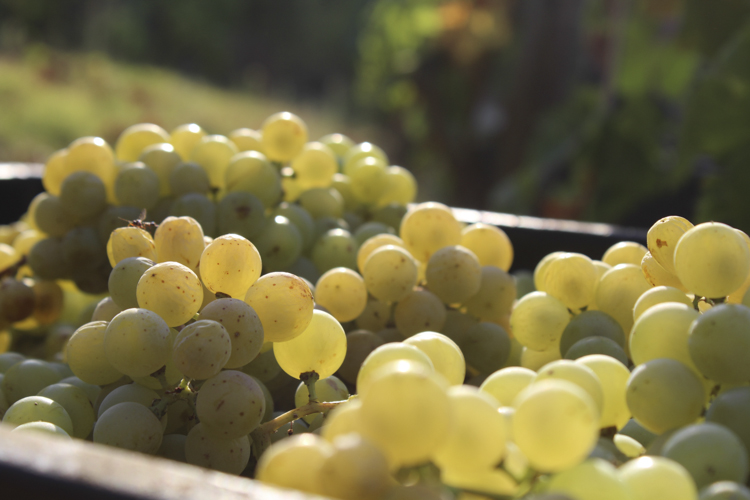
He admits that like many Asti wineries, economic considerations means they continue to sell part of the grape harvest to industrial wineries, “but I would be much happier marketing and bottling all my production if there was a bigger demand. I could produce twice as many bottles as I am at the moment.” While his three Moscato d’Asti cuvees range from a fruity, young wine to an elegant Moscato d’Asti di Canelli, Pietro holds out a lot of hope for his bubbly Asti Extra Dry, “as long as we can persuade bars and restaurants that it is the perfect aperitivo.”
The Cavallero family have been present in this part of Piedmont since the 1550’s, and it is a very different landscape from the vine-clad hills of Canelli and Santo Stefano Belbo. Here in the Alta Langa Astigiana, on the border with Liguria, the vineyards are rivalled by thick forest and intensive plantations of hazelnut trees to meet ever-growing demand from Nutella produced in nearby Alba.
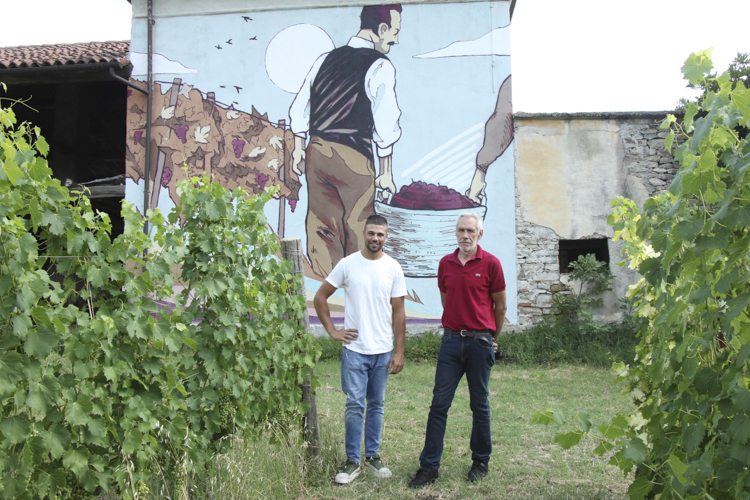
The cantina is run by Lorenzo Cavallero and his 25 year-old son, Giacomo, a recently qualified oenologist, and they have been been giving a lot of thought about the future of Moscato d’Asti. “We have been conducting an ongoing analysis of Moscato d’Asti for the last 25 years, especially into the crucial Linalool molecule that gives Moscato d’Asti is unique aroma. And frankly, it is much less present today due to the effect of global warming. In the old days, when you opened a bottle of Moscato d’Asti the whole room was filled with its unique aromas and perfumes. But today you need to swirl and sniff the wine in the glass to get the same effect. So we are hoping to turn the clock back a little by planting high-altitude grapes. It is a radical solution; ripping up the Moscato d’Asti vines here around the cantina, which are at about 250 metres, replant them with red grapes which grow well on lower plains, and then replant new Moscato vineyards higher up at 500 metres to try and recapture its elusive aromas, freshness and fruitiness taking advantage of cooler temperatures and less sunlight.” Lorenzo pensively explains the ups and downs of being a Moscato ‘d’Asti winemaker, from the days they exported 100,000 Asti Spumante Dolce bottles to an American importer till the contact ended and the reality of today production of just 10,000 bottles of Moscato d’Asti.
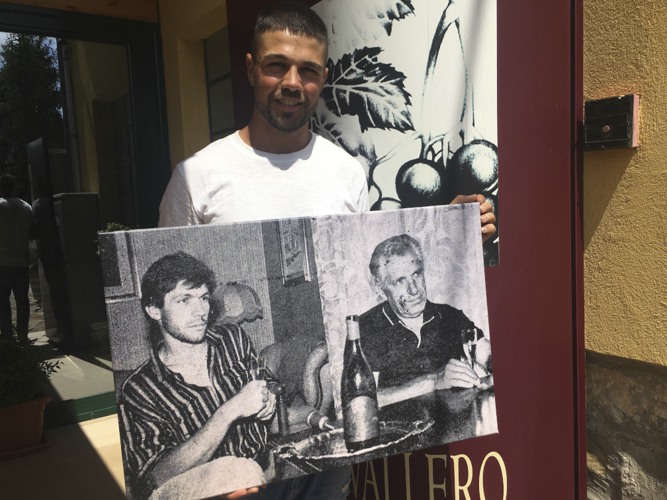
“But it remains historically important for our cantina and has a special place in our hearts, because in 1978, my Papa was the first winemaker around here to stop selling his grapes, built his own cellar where the animal stables were, and vinified his wine. And that first wine to be bottled was Moscato d’Asti.”
CANTINA LA TORRE DI CASTEL ROCCHERO
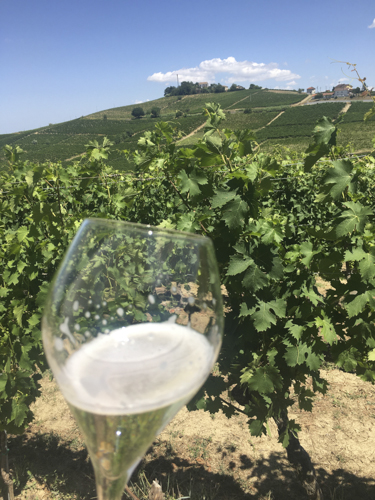
Driving through the bucolic countryside south of the Nizza Monferrato region, the horizon of vine clad hills is dramatically broken outside the village of Castel Rocchero by the dramatic 25 metre-high concrete wine tower of the local Cantina Sociale. The concept of these high-rise towers housing cement tanks for making wine was a popular trend in Italy dating back to the 1930’s, and although there are three still standing, this is the only one that continues to function on a daily basis since its construction began back in 1953. This Cantina is an intriguing mix of tradition and modernity, because while the distinctive Torre has great historical importance as its heritage symbol, the dynamic community of 80 Soci who cultivate some 280 hectares of vines are decidedly planning for the future having just inaugurated a smaller, modern wine tower, encased in glass that is dedicated to wine tourism. There is a boutique on the ground floor, with a spectacular tasting room upstairs that opens out onto a panoramic terrace overlooking the vineyards of the cantina’s members. Wine lovers can drop by for the popular Friday afterwork apertivo, organise idyllic picnics beneath a shady oak tree in the middle of the vineyards, or head off on bike tours of the surrounding countryside. And while giant modern steel vats stand alongside the tower, the cellar is covered with solar panels that make it virtually self sufficient in electricity. Many of the winery’s visitors want to go up to the top of the wine tower, despite the 108 steps, and it is certainly a memorable experience. A narrow spiral metal staircase winds up the Torre’s 4 floors, each with 14 cement tanks that are primarily used today for stocking the cantina’s red wines before bottling. The view when you get to the top, on a clear day as far as the Alps, is simply magnificent.
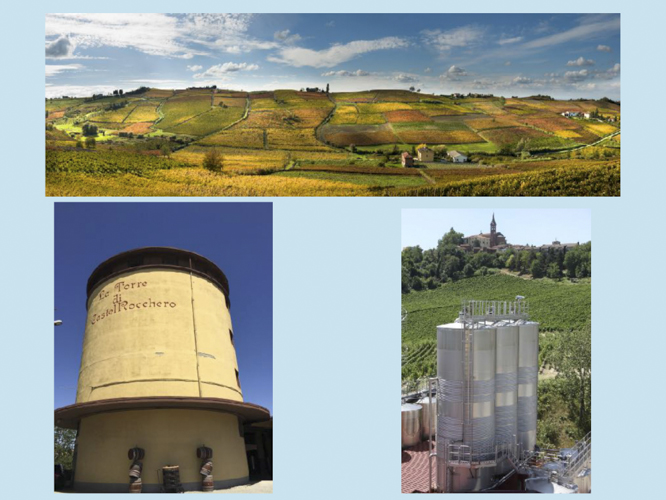
Where to Stay
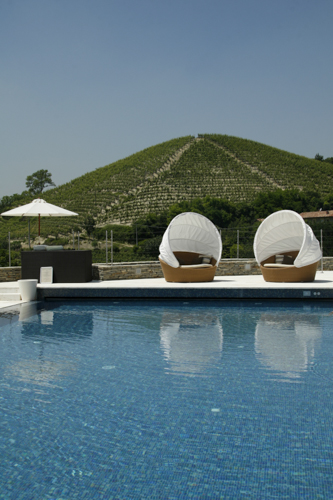
To splash out for a luxurious stay in the heart of Asti nothing compares with this deluxe 500 monastery that offers a wellness spa, to-die-for swimming pool and gourmet cuisine in their Michelin starred restaurant
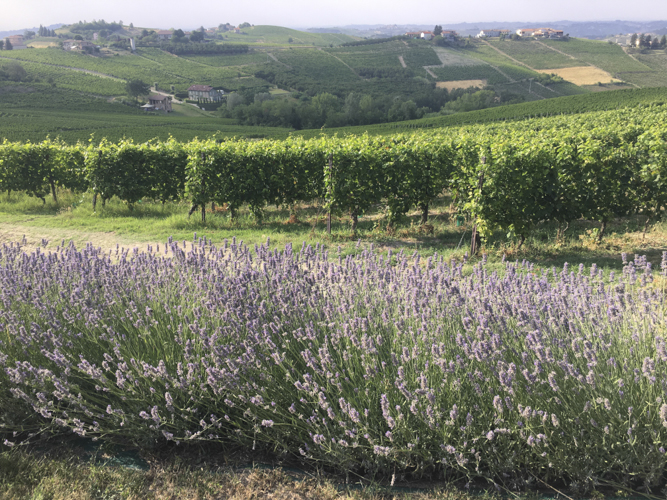
Delightful family winemaker bed & breakfast, relaxing pool with spectacular vineyard views, delicious breakfast of homemade Piedmont specialities and the chance in the evening to try the wines of friendly viticoltore, Giancarlo Amerio.
Where to Eat
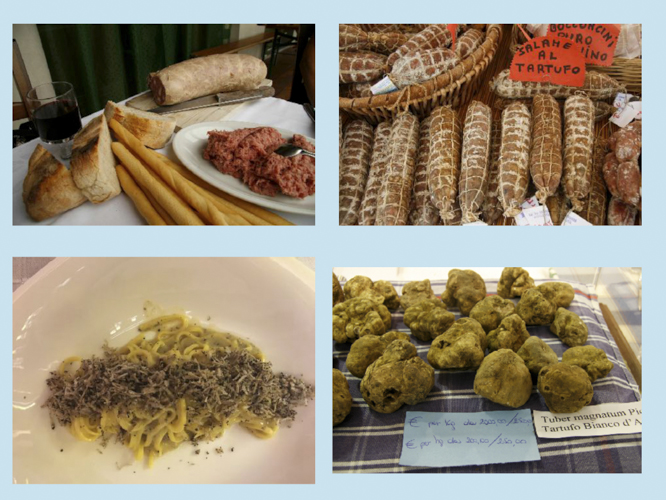
The red brick walls of Casa Crippa’s underground cellar is lined with a stunning selection of hundreds of different wines including an unparalleled choice of Moscato d’Asti and Asti Spumante. The cuisine is exceptional with creative interpretations using fresh local ingredients like white truffles and porcini mushrooms.
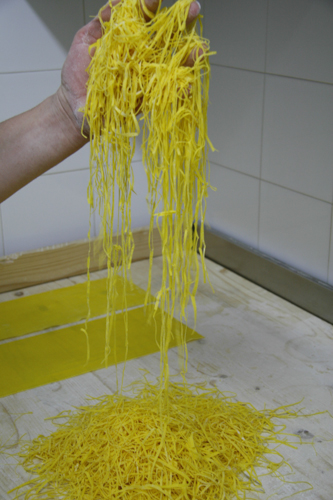
This discrete bistrot-style restaurant has a lovely outdoor dining terrace in summer, perfect to enjoy traditional Piedmont dishes like handmade plin ravioli, wispy tajarin pasta topped with a tasty wild boar ragù.And don’t miss the creamy bunet dessert, much more original than tiramisù
Ca’ di ’Ven
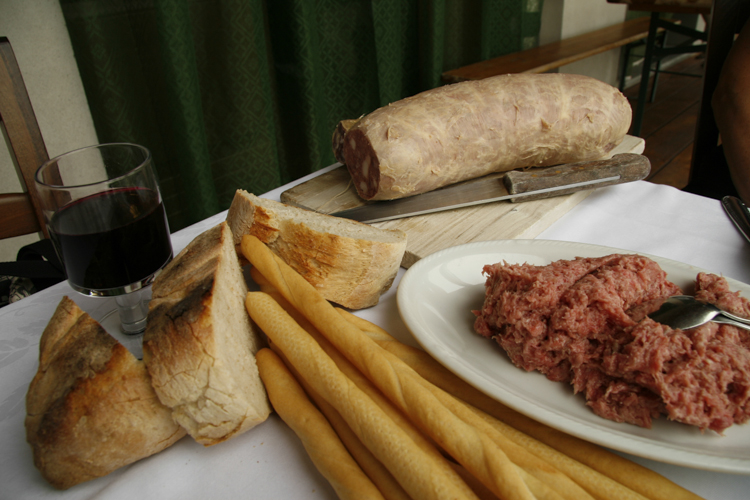
A great place to mix with local Asti winemakers, this casual bar and trattoria has just opened up right opposite the Cantina Sociale winery of Ricaldone, serving pizza, pasta and dishes of the day like vitello tonnato, carne battuta, the Piedmont take on steak tartare, or a rich brasato beef stew.


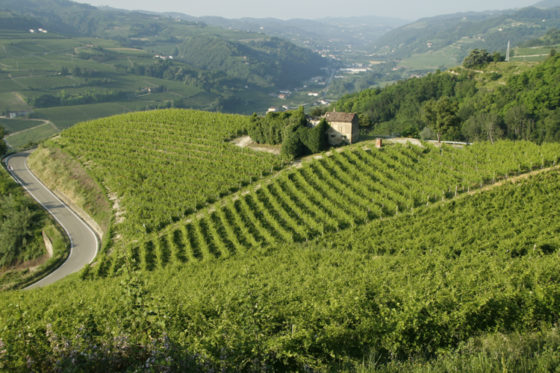
Recent Comments